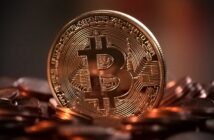The Federal Reserve (Fed) faces a complex challenge: balancing robust job growth with rising inflation concerns. This delicate act involves making policy decisions that sustain economic momentum without triggering runaway inflation. This article delves into six key areas to understand this dilemma better.
1. The Federal Reserve’s Dual Mandate
The Federal Reserve’s dual mandate—promoting maximum employment and ensuring price stability—creates a delicate balancing act, as these two goals can sometimes work against each other. A strong labor market with low unemployment often leads to higher wages, boosting consumer spending and potentially driving up inflation. Conversely, efforts to control inflation, such as raising interest rates, can slow economic growth and lead to job losses. The Fed manages this trade-off primarily through the federal funds rate, which influences borrowing costs for businesses and consumers. By adjusting this rate, the Fed can either encourage investment and hiring or rein in excessive growth to prevent inflation from spiraling out of control. However, external factors like supply chain disruptions, global economic conditions, and government policies can complicate this task, requiring the Fed to adapt its strategies dynamically to maintain economic stability.
2. Recent Trends in Employment and Inflation
As of early 2025, the U.S. labor market has shown resilience, with employers adding 143,000 jobs in January, pushing the unemployment rate down to 4%, the lowest level since May. This job growth signals a strong economy, boosting consumer confidence and spending power. However, it also introduces inflationary risks, as a tight labor market often leads to higher wages. While rising wages improve living standards and fuel economic activity, they can also contribute to demand-driven inflation, where increased spending drives up the cost of goods and services. Additionally, businesses facing higher labor costs may pass those expenses on to consumers through price hikes, further fueling inflation. The Federal Reserve must carefully assess whether this wage-driven inflation is temporary or a sign of deeper, more persistent price pressures, influencing its decisions on interest rates and monetary policy to ensure economic stability.
3. The Inflation-Employment Trade-Off
The Phillips Curve traditionally suggests that low unemployment leads to higher inflation, as businesses compete for a limited pool of workers by raising wages, which in turn fuels consumer spending and drives up prices. However, recent economic trends have challenged this long-held belief, as periods of historically low unemployment have not always led to significant inflation spikes. Factors such as technological advancements, globalization, and shifts in labor force participation have altered the traditional employment-inflation dynamic. Automation and remote work have expanded labor supply beyond geographical constraints, while global supply chains have helped keep production costs down, muting inflationary pressures. Additionally, changing consumer behaviors and corporate pricing strategies have influenced how wage growth translates into inflation. These complexities have sparked debates among economists about whether the Phillips Curve remains a reliable model for predicting inflation or if the relationship between employment and price levels has fundamentally evolved in the modern economy.
4. Federal Reserve’s Policy Responses
In response to a strong labor market and mounting inflation concerns, the Federal Reserve has taken a measured approach, balancing economic momentum with price stability. While job growth remains robust, Fed policymakers are wary of reacting too quickly, preferring to see sustained progress toward the 2% inflation target before making decisive rate moves. Raising interest rates too soon could slow hiring and investment, risking economic stagnation, while waiting too long might allow inflation to become entrenched. This cautious stance reflects the Fed’s commitment to data-driven decision-making, carefully assessing wage trends, consumer demand, and external factors like global economic conditions and supply chain stability. By maintaining flexibility, the Fed aims to navigate an evolving economic landscape, ensuring that monetary policy supports long-term stability without derailing the recovery.
5. External Factors Influencing the Fed’s Decisions
The Federal Reserve’s policy decisions are not made in isolation; they are shaped by a web of external forces that can either amplify or counteract its monetary measures. Trade policies, especially tariffs, play a crucial role by raising the cost of imported goods, directly impacting inflation and consumer prices. When businesses face higher input costs due to tariffs, they often pass those costs to consumers, fueling inflationary pressures that the Fed must account for. Similarly, global economic conditions, such as supply chain disruptions, energy price fluctuations, and geopolitical tensions, can create economic uncertainty, affecting both inflation and employment. For example, a conflict in an oil-producing region can drive up energy costs, increasing transportation and production expenses across industries. Additionally, economic slowdowns in major trading partners can reduce demand for U.S. exports, potentially weakening job growth in key sectors. The Fed must weigh these global risks alongside domestic indicators, ensuring that its policies foster economic stability without triggering unintended consequences like excessive tightening or prolonged inflation.
6. Future Outlook and Potential Scenarios
Looking ahead, the Federal Reserve faces a complex decision matrix, where each potential economic scenario demands a precise policy response. If job growth remains strong without triggering a surge in inflation, the Fed may opt for a wait-and-see approach, keeping interest rates steady to sustain economic momentum. However, should inflationary pressures intensify—whether due to rising wages, supply chain constraints, or external shocks—the Fed might be forced to tighten monetary policy by raising rates, aiming to cool demand without stifling growth. On the other hand, if hiring slows or economic indicators suggest weakening consumer confidence, the Fed could shift toward rate cuts to inject liquidity and encourage investment. The real challenge lies in deciphering whether inflationary trends are temporary or persistent, and whether job market fluctuations signal short-term volatility or deeper structural shifts. With economic conditions evolving rapidly, the Fed must balance agility with caution, ensuring that its policies support long-term stability without overcorrecting in either direction.
In conclusion, the Federal Reserve’s task of balancing strong job gains against inflation fears requires careful analysis and prudent policy decisions. By closely monitoring economic indicators and remaining adaptable, the Fed aims to sustain economic growth while keeping inflation in check.



